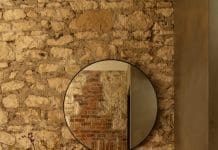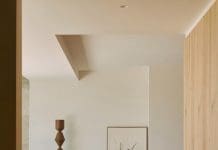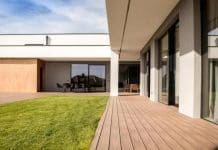Corner blocks are often under-valued real estate that offer a world of design possibilities! Sure, there can be some downsides, like a potential lack of privacy and greater area of ‘streetscape’ that can increase house facade and landscaping costs. But done right and your corner blocks present special opportunities that can turn your house from ‘nice house’ to ‘that incredible house everyone slows down to drive past and admire.’
Keep reading to find out the best ways to maximise your corner block’s appeal. From smart layout tactics to architectural touches that will get the entire neighbourhood buzzing in a good way, of course.
Related article: 7 tips to design a home that grows with you
Related article: Stylish window and door ideas for modern living
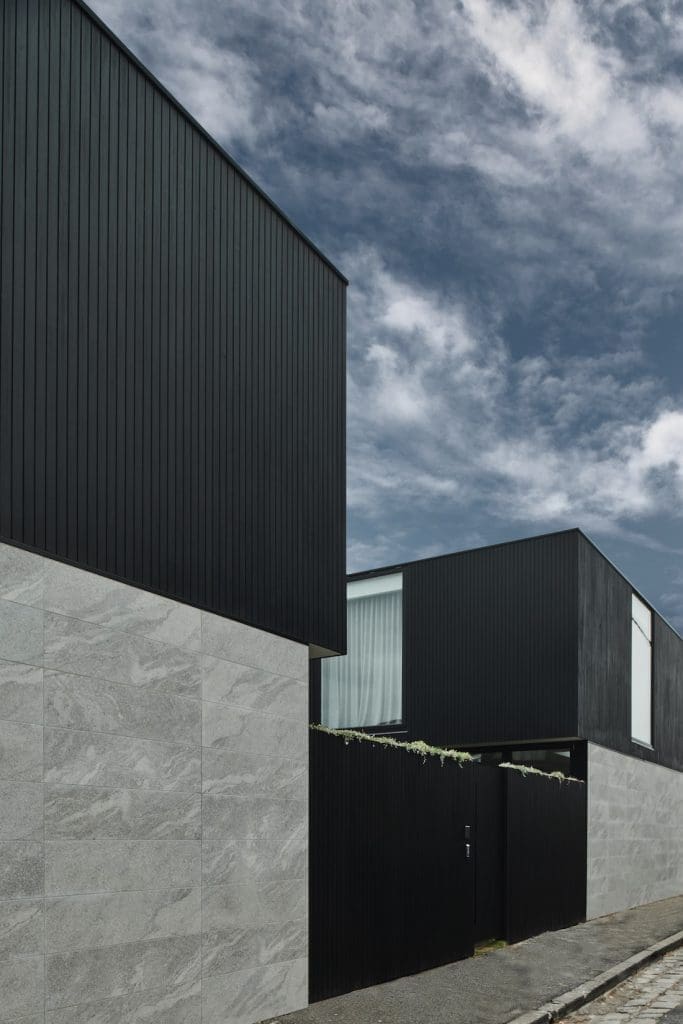
Why corner blocks are architecture’s hidden gems
Corner blocks are the residential overachievers. While standard blocks are sitting there keeping to themselves with one frontage onto a street, corner blocks are networking with two streets, drinking in sunlight from all sides, and just making the most of each square metre that they have.
The glory of corner blocks is their dual nature. You’ve got two totally contrasting street views to play with, so you can design different ‘faces’ for your house. Perhaps one side is your grand entrance that greets visitors with open arms, and the other your private sanctuary that shields prying eyes. It’s like having your cake and eating it too, only the cake is your home and it looks great from every direction.
Strategic layout planning: Getting the most out of every square metre
The key to successful corner blocks is realising that you’re not merely constructing a residence — you’re crafting a relationship between your home and two distinct streetscapes. This requires some clever layout planning that standard blocks don’t need.
Firstly, where your house sits on the block can have a huge impact on everything from privacy to sunlight. Experiment with positioning your house a little off the usual square-to-the-property-line method. This provides more dynamic outdoor spaces and even helps you get better views while keeping you private from each street.
Room placement becomes a strategic exercise on corner blocks. Your living spaces should take advantage of the dual aspect character of your land, with large windows set to receive morning sun on one side and afternoon light on the other. Bedrooms may be hidden away from your more busy of the two streets, while entertainment spaces may take advantage of the corner location to provide a feeling of openness and connection to the neighbourhood.
Accomplished builders show how creative corner block house designs can best utilise awkward sites, applying creative configurations to maximise interior space and sunlight while overcoming the specific issues that accompany two street frontages.
The secret is to think of your corner block as a chance, not a limitation. Sure, you may not have as much backyard seclusion as an average block, but you’ve also got the possibility of more imaginative outdoor spaces, improved cross-ventilation, and the opportunity to design something truly special in your streetscape.
Mastering the art of dual frontages
Having two street frontages is akin to being the host of two parties simultaneously. You have to ensure both are friendly, but they don’t have to be of the same atmosphere. That is where corner blocks can stand out from a design point of view.
Your main frontage (likely the one towards the busier road or your preferred address) needs to stand out. This is where you’ll position your main entrance, maybe with a highlighted garden, architectural lighting, or defining materials that shout ‘this is definitely the front door.’ But that’s where corner blocks become smart; your secondary frontage doesn’t need to play second-best. It can exist with its own personality completely.
Some successful corner block designs use the secondary frontage as a chance to have more relaxed living. Perhaps it’s where your kitchen window is situated, where you’ve placed a side courtyard, or where you’ve designed a more intimate family entrance. Others take up the corner site altogether, designing a wraparound type that gives both frontages equal emphasis.
The secret is making your two frontages have a dialogue with one another. They should be like they share the same house, even if they create different sides of your life. This could involve repeating materials but in different quantities, or repeating a similar colour scheme but changing the architectural details.
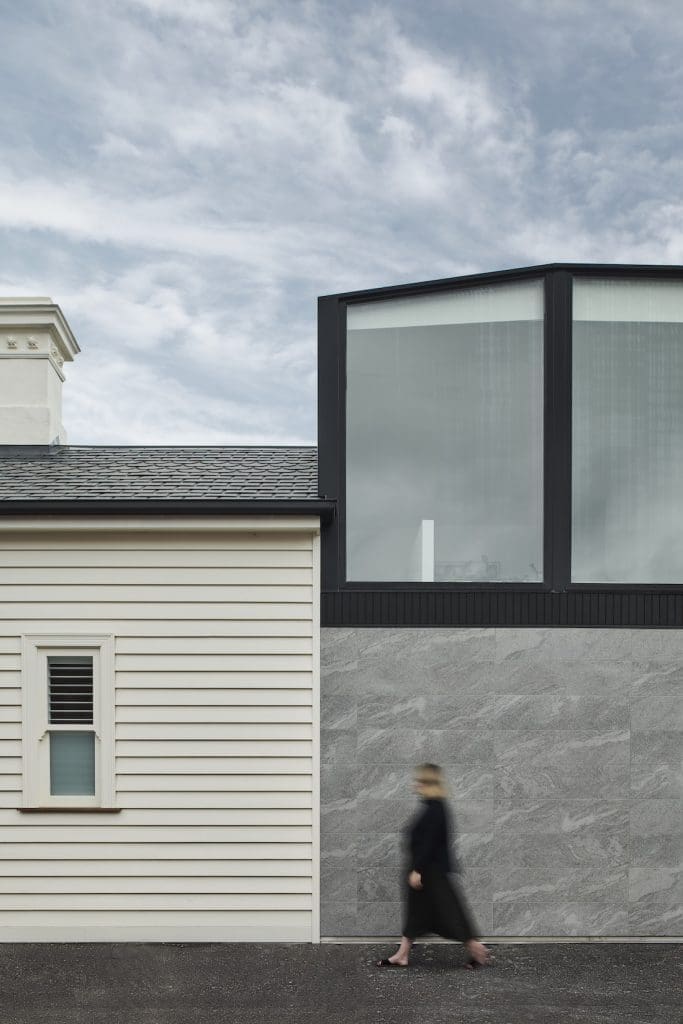
Privacy solutions that don’t compromise style
Let’s talk about the elephant in the room, corner block privacy. With two street fronts, you’re basically living in a fishbowl unless you plan ahead. But don’t worry! There are many ways to gain privacy that really benefit your home’s street appeal.
Landscaping is your front line of defence and your best ally. Thoughtful tree placement can obscure windows without eliminating all your natural light. Hedge rows can create boundaries whilst breaking up the hard lines of fencing. And layered planting can add depth and interest that makes your corner block go from exposed to elegant.
Corner block fence strategies take a little more consideration than the simple ‘6-foot Colourbond all around’ solution. Think about changing the heights of fences to add visual interest without compromising on privacy where you want it most. Perhaps your front fence is lower and more ornate, and your side boundary ramps up to full height as it gets further from the street.
Architectural screen solutions can be both fabulous and functional. Pergolas, lattice screens, and careful window placement all have their role to play. Materials-wise, design features like aluminium battens are becoming more popular to delineate facades, mitigate harsh sunlight, and provide privacy without diminishing street appeal. These slender, contemporary screening solutions can filter light magnificently while preserving that look of cutting-edge modernity that gives corner blocks that extra gleam.
Making the most of natural light and ventilation
Corner blocks are essentially the VIP area when we talk about natural light and ventilation. Exposed to more directions, you’ve got cross-ventilation chances that ordinary blocks can only look at in envy. But as with anything good, some planning is needed to get it right.
Window positioning becomes important on corner blocks. You want to let in light without having a greenhouse effect in summer or making your house an icebox during winter. Keep in mind the orientation of your two streets if one is north, you’ll want to maximise window space on that side for winter heat. If the other is east or west facing, you may need to plan window sizes and locations more strategically in order not to face brutal morning or afternoon sun.
Cross-ventilation is where corner blocks truly shine. By being strategic with windows and doors to facilitate airflow from one street frontage to the other, you can have natural cooling that lessens your dependency on air conditioning. Passive design isn’t only kind to your power bill and the environment, it also makes the house more comfortable to live in year-round.
Don’t forget about seasonal considerations. Trees that provide summer shade but allow winter sun through, adjustable screening that can be modified throughout the year, and outdoor spaces that work in different weather conditions all contribute to a corner block home that’s comfortable in every season.
Outdoor spaces that work overtime
Corner blocks disrupt the classic Australian ideal of the backyard, but they also present possibilities to rethink how outdoor space functions. Rather than a single expansive backyard, you could end up with multiple smaller outdoor spaces, each with its own personality and purpose.
Courtyard gardens may be cosy outdoor rooms that are private and peaceful in spite of being located on a busy corner. Side gardens may be transition areas that screen out noises while offering chances for productive gardening or play spaces for children. And front gardens are an extension of your home’s street presence that adds character to the neighbourhood as well as to private use.
The secret is considering how your outside areas relate to one another as well as to your inside living spaces. A well-designed corner block could have a breakfast courtyard that receives morning sun, a main entertaining space placed for afternoon shade, and a peaceful reading area that offers evening escape. Each area has a separate purpose, yet collectively they form an overall outdoor lifestyle.
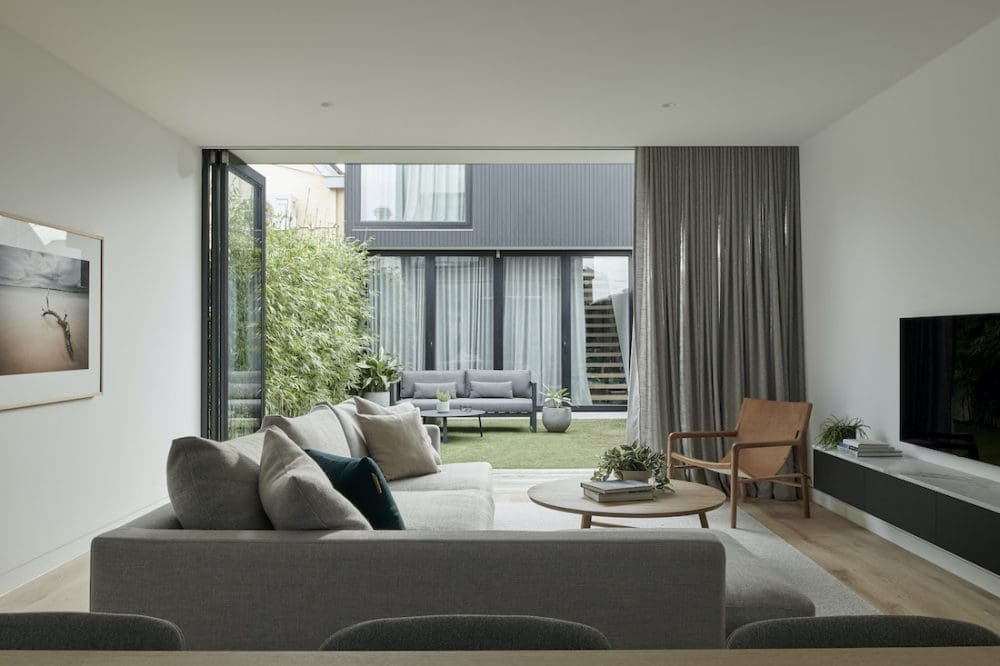
Material selection that makes a statement
Corner blocks provide you with additional facade space to play with, which is more chances to make your material selection matter. It’s thrilling but can also be a little overwhelming. Do it well, and you’ll have the most envied house on the block. Do it poorly, and you’ll be seen from two streets’ worth of disapproving neighbours.
The secret to successful material usage on corner blocks is variation with consistency. You want your house to read as a single entity from any view, but you also want to seize the moment to have visual interest throughout your various facades.
Think about using a dominant material that turns corners to create a cohesive appearance, and then adding secondary materials that bring the interest and segmentation of different spaces. That could be brick or render walls as your main component, with timber or metal screening elements offering privacy and shade in required areas.
Colour selection becomes even more significant on corner blocks since you’re more on display from more directions. Neutral colours tend to suit because they make a refined background for landscaping and architectural details to take centre stage. But don’t hesitate to use accent colours. A cleverly selected front door colour or feature wall can elevate your corner block from nice to wow.
Integration with streetscape and neighbourhood character
Corner houses aren’t isolated, they’re part of the neighbourhood, and they tend to be landmark houses just because of where they sit. That presents you with a chance as well as an obligation to add positively to your streetscape.
Make some time to get to know your local area’s character before you settle on your design. You don’t have to replicate what everyone else has done, but do think about how your house will sit in the current context. An ultra-modern glass box can be breathtaking, but if it’s amongst heritage cottages, it may look out of place more than just distinctive.
Think about how your decisions to design influence the pedestrian experience on both of your street frontages. Corner blocks usually occupy intersections where people tend to stop, so you’re in a position to make something that improves the walking experience in your area. This could be interesting front gardens, properly designed lighting, or architectural details that bring visual interest without being dominating.
Future-proofing your corner block investment
Corner blocks take a little more initial planning, but they also have great potential for future development or renovation. The double frontage aspect is such that you may have the possibility for subdivision in the future, or for the inclusion of secondary dwellings that benefit from the multiple street access.
When planning your initial build, consider how your design might adapt to changing family needs or future development opportunities. This might mean positioning services to allow for future additions, designing outdoor spaces that could accommodate pool additions, or creating layouts that could easily be reconfigured if family circumstances change.
The secret of successful corner blocks is embracing what’s different about them instead of attempting to make them conform to normal suburban blocks. Yes, they need more thought, more regard for privacy and street presence, and more deliberate material choice. But they also provide possibilities for natural lighting, airflow, al fresco living, and architectural flair that standard blocks cannot.
Bringing it all together
Corner blocks are similar to that friend who’s a little high-maintenance but totally worth it once you get the hang of their personality. They require thoughtful consideration, careful design choice, and an openness to think outside the suburban square. But for those willing to work with their quirks, corner blocks provide the opportunity to build homes that are truly unique, highly livable, and neighbourhood landmarks in the best sense of the word.
We hope this article inspires you to not think of your corner block as a list of things to get through but as a creative problem-solving exercise in itself. With clever planning, consideration of privacy solutions, strategic material selection, and a solid appreciation of where your house sits in its wider neighbourhood context, your corner block can become the most envied house on every ordinary suburban block in the suburb.


